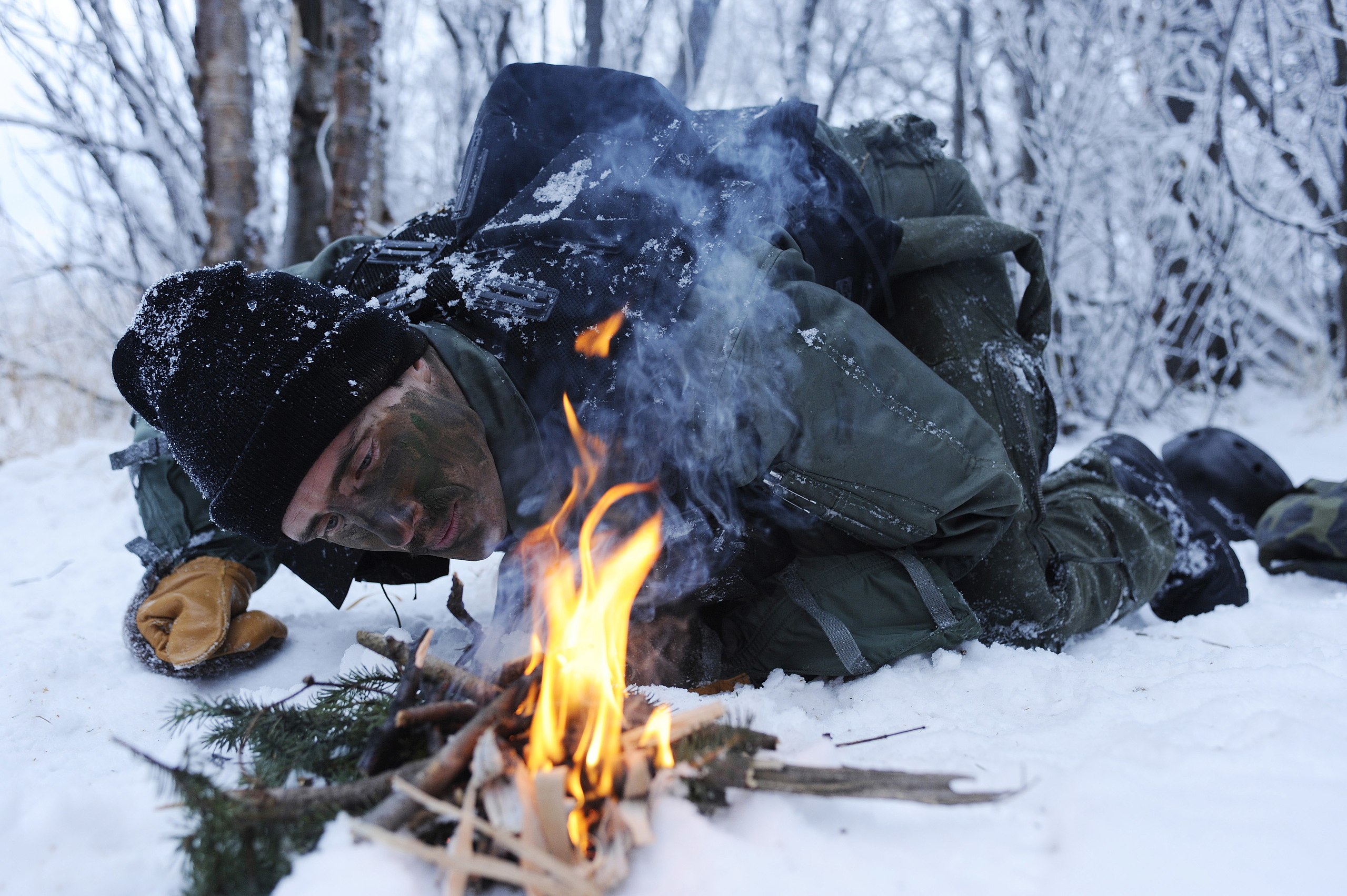Building fire to help combat frostbite and hypothermia during a survival, evasion, resistance and escape (SERE) exercise. U.S. Air Force photo by Senior Airman Jonathan Snyder.
Surviving in the wilderness requires knowledge, skills, and a strong will to overcome challenges. Wilderness survival training is a valuable skill for anyone who spends time in wilderness areas, such as hikers, campers, hunters, or explorers. It teaches how to cope with unexpected situations, such as getting lost, injured, or stranded, and how to use natural resources to survive. Wilderness survival training can also increase one’s confidence, resilience, and appreciation for nature. By learning the basics of wilderness survival, such as finding water, building shelter, making fire, and signaling for help, one can be better prepared for any challenges that may arise in the wild.
Bare-bones principles of wilderness survival:
1. Preparation
Before heading into the wilderness, it’s crucial to prepare. This includes researching the area, understanding potential risks, and packing essential items like a map, compass, first-aid kit, multi-tool, flashlight, fire-starting kit, and adequate food and water.
2. Shelter
The first priority in a survival situation is to build a shelter to protect against the elements. This could be a natural shelter, lean-to, a snow cave, or even a simple tarp strung up between trees.
3. Water
Humans can survive only a few days without water. Finding safe drinking water in the wilderness is crucial for survival. Always carry a method to purify water, such as a water purification filter or water purification tablets. If these aren’t available, boiling water at a rolling boil for at least one minute at elevations under 6,000 ft or three minutes at elevations over 6,000 ft can kill most pathogens.
A solar still is not a good option for survival. It takes too much effort and resources to make and use. A better way to get water is to collect dew from plants with a cloth in the early morning and squeeze it into a container. This is more effective and easier to do in places with green vegetation.
4. Fire
Fire is one of the most essential elements for survival in a wilderness situation. It can provide warmth, light, comfort, protection, and signal. It can also help you cook food, purify water, ans dry clothes. Carry multiple fire-starting methods such as matches, lighters, and ferro rods.
5. Food
While humans can survive weeks without food, it’s still important to know how to find food in the wilderness. This can include fishing, hunting, trapping, or foraging for edible plants.
6. Navigation
Knowing how to navigate using a map and compass is crucial. In a pinch, you can use the sun, and stars can also provide direction.
7. First Aid
Understanding basic first aid can be the difference between life and death in the wilderness. This includes how to treat cuts, burns, broken bones, and other injuries.
8. Signaling
If you’re lost, signaling for help can increase your chances of being found. This can be done with fire, a mirror, a whistle, or creating symbols in open areas.
9. Attitude
Perhaps the most important survival skill is a positive attitude. The will to survive. Staying calm, making a plan, and keeping hope can greatly increase your chances of survival.
10. Decision: Stay Put or Travel
One of the most critical decisions in a survival situation is whether to stay put or travel. Here are some factors to consider:
Stay Put
If you’re lost but have told someone your planned route and return time, it’s often best to stay put. They can alert authorities if you don’t return, and rescuers will start searching along your planned route.
If you’re injured, it’s usually safer to stay put to avoid exacerbating the injury. Staying put allows you to focus on maintaining your shelter, fire, and other survival essentials.
Travel
If you’re confident in your navigation skills and know where you are, it may be best to travel towards safety.
If you have not told anyone your plans and no one knows you’re missing, traveling might be necessary.
If you’re in immediate danger due to environmental conditions (like a flood or forest fire), you’ll need to move.
Remember, this decision should not be taken lightly. Consider all factors and make the choice that gives you the best chance of survival.
To Sum Up
The key to survival is preparation. Equip yourself with knowledge and skills before venturing into the wilderness. Stay safe!
*The views and opinions expressed on this website are solely those of the original authors and contributors. These views and opinions do not necessarily represent those of Spotter Up Magazine, the administrative staff, and/or any/all contributors to this site.

